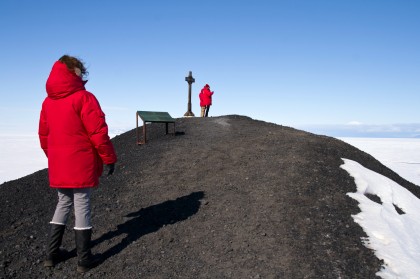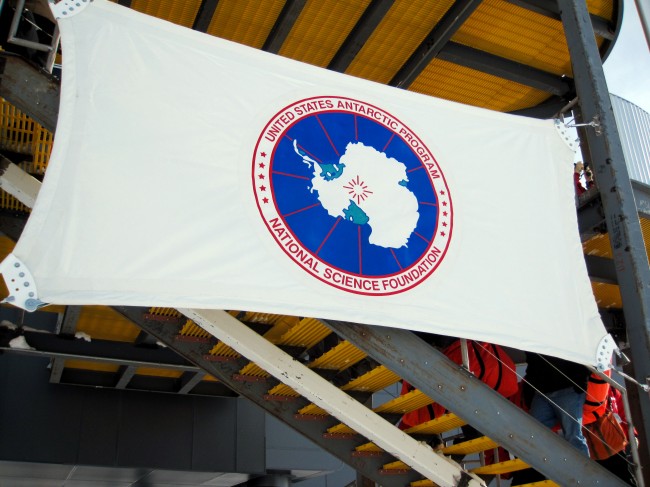3 March 2010
Antarctica- Science On The Ice (Parts 1-4)
Posted by Dan Satterfield

Ann Posegate of the National Env. Education Foundation and I made a joint application to the NSF to visit the science bases in Antarctica. Ann also writes for the wildly popular Capital Weather Gang at the Washington Post. Click this image to see her posts about our trip!
We have finished airing, on WHNT- TV, the 4 part series on Antarctica. All 4 parts are available to watch on this post but the movies are small. Ann Posegate and I actually shot in HD and in coming weeks I will edit some of the HD video together and put it online.
We have just skimmed some of the science and for my fellow nerds, we have some beautiful pictures and interviews to tell and show.
Here is Part One covering the trip to McMurdo, the largest science base in Antarctica.

Ice crystals in the air produce a beautiful sky at the South Pole. It's unlike anything I have ever seen. Ann Posegate's image.
Part 4 covers the trip to the South Pole itself.
It is an amazing place and I am so very lucky to have had the opportunity to stand at the very bottom of the world.
It’s hard to know for sure but estmates are that only around 4-6 thousand people in all of human history have stood at the South Pole. After Amundsen and Scott made it in 1911, there was no one else until 1952!
About 45 people will winter over at the Pole this winter. The last flight out has already left. I would give anything to have the opportunity to visit again someday. Some of the most important science in the World is being conducted there and on the polar ice cap.
Part 4:

Vince's Cross at Hut Point near McMurdo Base in Antarctica. The cost of science can be very high indeed.
We shot our video in high definition, and we’ll put some clips up soon of the interviews with scientists and of the incredible scenery.
Ann and I both put a very high priority on sharing our story with students. We are already working on material for teachers and we will gladly answer any questions!



 Dan Satterfield has worked as an on air meteorologist for 32 years in Oklahoma, Florida and Alabama. Forecasting weather is Dan's job, but all of Earth Science is his passion. This journal is where Dan writes about things he has too little time for on air. Dan blogs about peer-reviewed Earth science for Junior High level audiences and up.
Dan Satterfield has worked as an on air meteorologist for 32 years in Oklahoma, Florida and Alabama. Forecasting weather is Dan's job, but all of Earth Science is his passion. This journal is where Dan writes about things he has too little time for on air. Dan blogs about peer-reviewed Earth science for Junior High level audiences and up.
Awesome. Thanks!